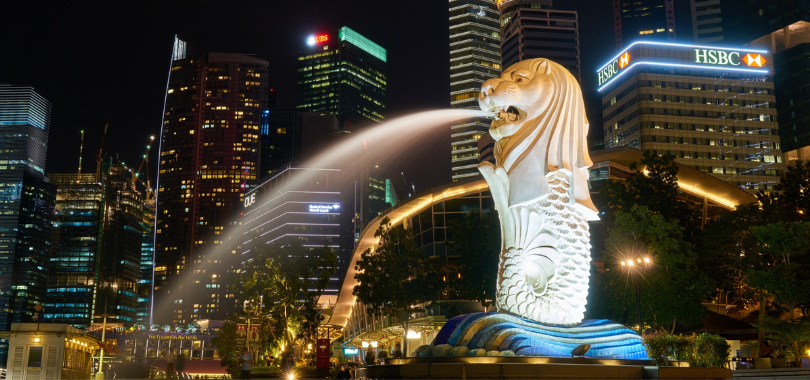Strategic Foresight and Planning: What’s Behind Singapore’s Adaptive Model?

Image Source: Freepik
In an era of uncertainty, determining what impacts an organization’s direction is as important as identifying those factors, understanding the risks, and knowing which ones truly matter. Achieving such clarity is possible through strategic foresight, a structured approach used to anticipate opportunities and challenges to prepare for future changes. This approach is even more crucial in the government sector, where authorities are responsible for public resources, well-being, and long-term stability.
Singapore serves as an exemplary case study in this realm. The country ranked fifth in the World Intellectual Property Organization’s Global Innovation Index 2023 and has been recognized for its ability to translate “innovation investments into innovation outputs.” Similarly, the Singapore Country Report 2024 for the BTI Transformation Index, where Singapore ranks 21st out of 137, provides further examples of how the country maintains strategic priorities and implements policies effectively in several areas.
Singapore’s adaptability is also reflected in its ranking in The KPI Institute’s Government Service Index 2023. Singapore ranked first in Future Readiness, which, in the context of government services, refers to the capacity and preparedness of government agencies and institutions to adapt, innovate, and effectively meet society’s evolving needs and challenges in the future.
Future readiness also emphasizes forward-thinking and proactive approaches to governance. Several perspectives were assessed in this dimension of the index, wherein Singapore took the top spots in Strategic Prioritization (first), Innovation (second), R&D Expenditure (second), Regulation of Emerging Technologies (second), Investment in Green Energy and Infrastructure (fifth), and Hightech and Medium-high-tech Manufacturing (first).
Read More >> The Power of Change Management in Strategy Execution
Singapore’s decades-long history of planning, as noted on the Centre for Strategic Futures’ (CSF) website, started with an experiment in the Ministry of Defence in the late 1980s. It was further refined in 1995 when the Scenario Planning Office was set up in the Prime Minister’s Office. In 2003, it was renamed the Strategic Policy Office (SPO) “to reflect the strengthened links between foresight work and strategy formulation.”
In 2009, the CSF was established within the Strategic Policy Office to focus on whole-of-government strategic planning and prioritization. Its vision is “to build a strategically agile public service ready to manage a complex and fast-changing environment.” This suggests a focus on adapting governmental structures and processes and emphasizes the importance of flexibility within the public sector to address future complexities and changes. Its mission is focused on three main areas: “building capacities, mindsets, expertise, and tools for strategic anticipation and risk management; developing insights into future trends, discontinuities, and strategic surprises; and communicating the insights to decision-makers for informed policy planning.”
Strategic Foresight Tools
To develop insights into future trends, the CSF applies sophisticated strategic foresight tools recognized as Scenario Planning Plus (SP+). SP+ serves six purposes: defining focus, environmental scanning, sense-making, developing possible futures, designing strategies, and monitoring. The process goes as follows: the nature of the problem is established first, and then problems are divided into five domains—simple, complicated, complex, chaotic, and disorder—using tools such as complexity theorist Dave Snowden’s Cynefin Framework Problem Definition.
Subsequently, with Driving Forces Analysis and Prioritisation [sic] tools, potential trigger events are examined based on how they can influence existing trends and then subsequently ranked according to their potential impact on stakeholders. Afterward, Scenario Planning is used to generate narratives and models to comprehend conceivable future conditions. This method makes use of stories to depict possible future scenarios, questioning assumptions and stimulating deliberation on long-term strategies.
One of the responsibilities of the CSF is to distribute the SP+ toolkit throughout the Singaporean Government. To achieve this, the center conducts a series of workshops called “FutureCraft.” Experts are invited to join said workshops, which focus on introducing key skills and tools relevant to government foresight work. Through its publications, the CSF disseminates information that aims to address real-world challenges and offer different approaches to envisioning the future, such as the Driving Forces Cards 2040.
Read More >> Beyond the Basics: Developing Strategic Management Skills
By embracing strategic planning as a core approach, the Singaporean government fosters resilience, adaptability, and competitiveness, thus paving a sustainable path for the country’s future. Governments across the globe can learn from Singapore’s example of creating strategic foresight units to become better equipped to make informed strategic choices, anticipate potential complex socioeconomic obstacles, and gain a competitive edge.
**********
Editor’s Note: This article was originally published in Performance Magazine Issue No. 30, 2024 – Government Edition.
